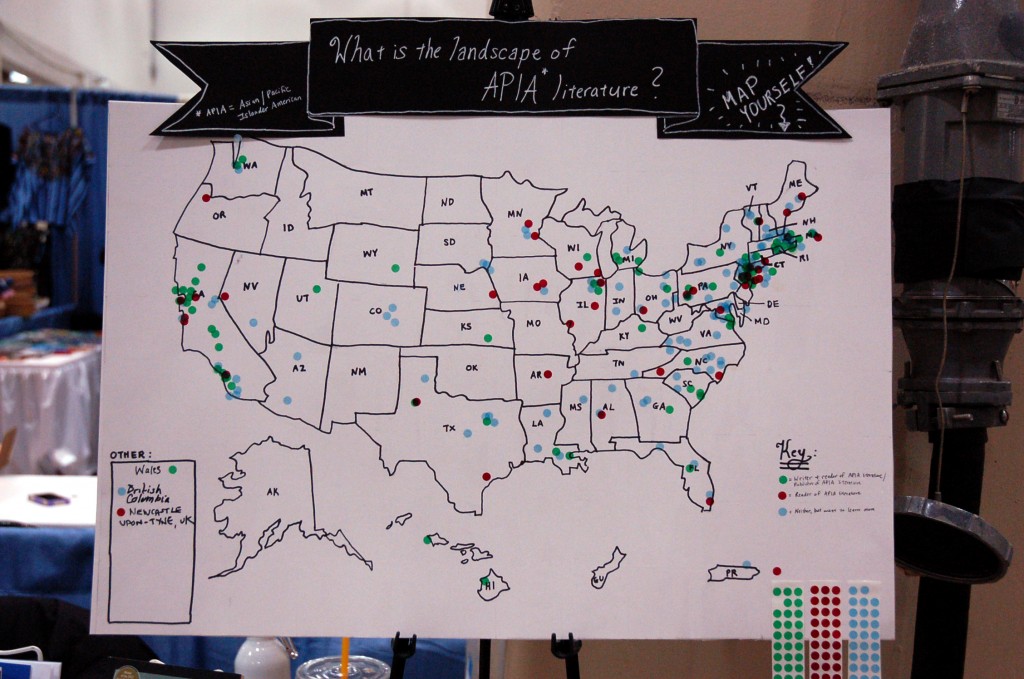
“What is the Landscape of APIA Literature?” reads the poster board map of the United States that I’ve stuck up on my bedroom wall. Red, green, and blue dots cluster over the black sharpie outlines of its borders, clotting layer upon layer in some locations (e.g. NYC, LA, SF, New England), and scattering more sparsely across others (there’s two lonely blue dots huddled together in the southeastern-most corner of South Dakota; while several states—such as Alaska, Idaho, Oklahoma, and New Mexico—remain blank). A key in the right hand corner provides some interpretation: green dots stand for people who identify as writers and readers (and/or publishers) of Asian/Pacific Islander American (APIA) literature, red for those who identify as readers (but not writers) of APIA lit, and blue for those who identify as neither a reader nor a writer of APIA lit, but are curious to learn more.
The information on this map was “crowd-sourced” a few months ago at our the AWP bookfair table, where we and three other APIA lit mags (Kartika Review, TAYO Magazine, and Hyphen) invited passers-by to add dots representing themselves to the map according to the place of origin with which they most identified and their relationship to APIA literature. One of the things that struck us immediately was how very open people were to our invitation to “map” themselves. The act of adding oneself to a map carries its own particular appeal. To place yourself on a map is to make a statement about one’s identity; to declare one’s origins; to make one’s mark on a place; to speak for and represent oneself amidst a larger community. In the context of a conference as bewilderingly large and far-flung as AWP, especially, that seemed particularly important.
Continue reading “Editors’ Corner: What is the Landscape of APIA Literature?”